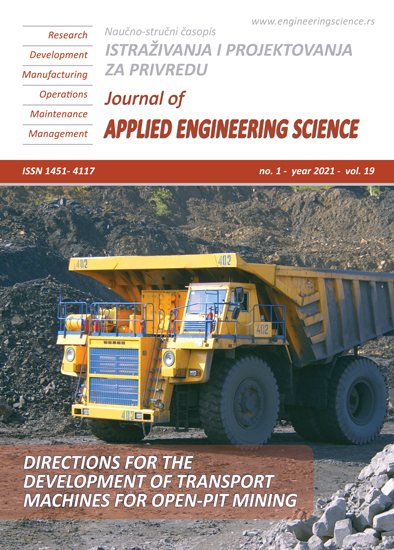PROPOSED MODELS TO CALCULATE AND OPTIMIZE LINE CAPACITY UNDER DIFFERENT OPERATION CONDITIONS FOR EGYPTIAN RAILWAY NETWORK
Abstract
The capacity evaluation models are planning tools that help government agencies to maximize the benefit from existing railway infrastructure and improve rail transportation operations. These models determine the maximum number of trains that could operate on a given railway infrastructure, during a specific time interval under operational conditions. This paper develops analytical models to calculate the railway line capacity using a regression analysis based on the Egyptian official timetable. The Egyptian railway network consists of 104 links under different operation conditions (passenger / freight, passenger and freight trains) with mechanical or electrical signals systems running on single or double tracks. To calculate railway practical capacity, the three equations for each operation conditions were improved by the combination of the longest block section and passenger and freight speed. These equations have accepted value of the coefficient of determination and the absolute average error. Finally the maximum capacity is obtained by the optimum values of effective factors using iteration technique. This optimum values will increased about 80% of the capacity for Egyptian network lines.
References
REFERANCES
Robots, C., Schmid, F., Connor, P., Ramads, V., and Sharpe, J. (2010). A New Railway System Capacity Model, A Method of Assessing Capability Trade-offs on Railway Capacity Using A System –Wide Approach. Transport Research Laboratory.
International Union of Railway Capacity. UIC code 405, 406. 1st edition 1996. And, 2nd edition 2004.
HDR Engineering. (2001). Everett to Blaine Commuter Rail Preliminary Feasibility Study. Washington: Report prepared for the Washington State Department of Transportation and Snohomish County.
Lindfeldt, A., (2015). Railway Capacity Analysis, “Methods for Simulation and Evaluation of Timetables, Delays and Infrastructure”. PhD Thesis in Infrastructure Stockholm, KTH Royal Institute of Technology.
Pachl, J., (2018). Railway Operation and Control, 4th Edition, VTD Rail Publishing, WA United States.
Abril, M., Barber, F., Ingolotti, L., Salido, M. A., Tormos, P., Lova, A., (2008). An Assessment of Railway Capacity, Transportation Research Part E: Logistics and Transportation Review, vol. 44 (5), pp. 774-806. DOI:10.1016/j.tre.2007.04.001.
Han, J., Yue, Y., Zhou L., (2016). A Microscopic Simulation Method to Calculate the Capacity of Railway, Station School of Traffic & Transportation, China International Forum on Management, Education and Information Technology Application.
Ali, M.A., (2012). Opportunities for High-Speed Railways in Developing and Emerging Countries: A case study Egypt. PhD Thesis of the Railways Engineering Approved Dissertation. DOI: 10.14279/depositonce-3343.
Connor, P., (2014). High Speed Railway Capacity Understanding the factors affecting capacity limits for a high speed railway.
Huelsz, A.D. Prince, (2015). Capacity Factors in Intermodal Road Rail Terminals. Department of Technology Management and Economics. Division of Logistics and Transportation. DOI: 10.13140/RG.2.1.4945.5127.
Sangphong, O., Siridhara, S., and Ratanavaraha V., (2016). Determining Critical Rail Line Blocks and Minimum Train Headways for Equal and Unequal Block Lengths and Various Train Speed Scenarios. DOI: 10.4186/ej.2017.21.3.281.
Zhong, Q., Shaoquan Ni, Shengdong Li, Chang’an Xu., (2019). Railway Infrastructure Capacity Utilization Description through Data Integration in Blocking Time Theory, 8 th International Conference on Railway Operations Modelling and Analysis - RailNorrk¨oping.
Perugachi-Diaz, Y., (2017). Correlation in Linear Regression, Vrije Universiteit Amsterdam Research Paper.
Kim M., Bruce A. Mccarl, and Thomas H. Spreen. (2013). Applied Mathematical Programming.
Diana, M.S. Rahoma, Ali Z. Heikal, Haytham N. Zohny, Akram S. Kotb. (2019). Parametric Model for Evaluating Railway Network Capacity Using Neural Network Techniques, International Journal of Engineering and Advanced Technology (IJEAT) SSN: 2249 – 8958, Volume-X, Issue-X.

